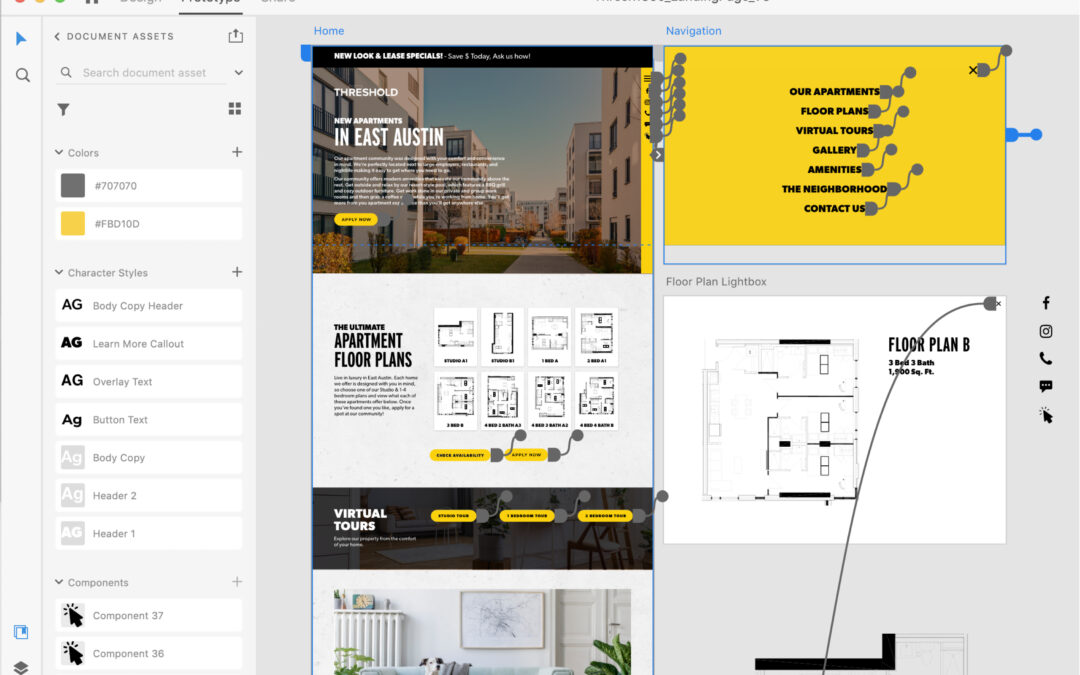
How To Boost Your Brand With Storytelling On Your Real Estate Website
 Written by Heather Ford, Senior Designer & Web Developer
Written by Heather Ford, Senior Designer & Web Developer
People love a good story. It’s been scientifically proven that when humans hear a story that they like, it can increase their levels of oxytocin, the ‘feel good’ hormone that boosts feelings of happiness, empathy and trust. Savvy marketers have been capitalizing on this for ages, creating engaging stories for brands that resonate with people and, ultimately, persuade them to open their wallets. (Super Bowl ads, anyone?) Storytelling works in marketing because, beyond the brain hormones, it gives people a way to relate to your brand on a human level. And in the digital world we live in, this has never been more important.
While print and especially video media seem the obvious choice for this sort of humanized communication, there is another, maybe counterintuitive, area that property developers and managers can take advantage of storytelling’s powerful ability to sway the hearts of their potential tenants: their real estate website.

All good design uses color, shape, flow, imagery and copy to craft a story. Beyond these things, you can consider the common ‘three-act’ structure that many stories use when laying out the structure of a webpage:
Act 1: The Set Up. This is where your audience is introduced to the main idea of the web page they are looking at. It’s the hook that makes them keep reading, so an apartment webpage hero should be visually interesting and clear in its messaging. Act 1 in a story is also when an inciting incident happens, or a thing that drives further action. In the case of web design, this can be a strong, punchy call to action.

Act 2: The Action. This is where the bulk of the plot, or in the case of property websites the detailed information, occurs. Any text or content-heavy sections of your web page, like exhaustive lists of features and finishes, should go in the middle. Once the viewer has been introduced to the main idea of the page they are on, they can decide they want the information that is below the hero section.

Act 3: The Resolution. If you’re feeling super fancy, you can also call this the ‘denouement’. At the end of your webpage, don’t just let your content fizzle out. People have made it all the way to the bottom; they deserve a satisfying conclusion to the story. Use this as an opportunity to outline how your property solves a common pain-point for renters, or create a sense of urgency and provide a clear next-step for your users, like “Apply Now!”

A single page on your property website can encompass an entire story, or a piece (a chapter, let’s call it) in an overall story you are trying to tell about your brand. Given the way people interact with web pages, scrolling is just like page flipping. Rather than jumping randomly from page-to-page, users progress through information as a linear sequence. Because of this, a story on a website has to unfold vertically, and not in small chunks that have no visual connection between them. Unlike books, there are many ways websites can enhance this to their advantage, such as:
- Using animation. Animation on a website can be used to enhance people’s attention toward important plot points (useful information, promotions, or CTAs) and shift their attention from one place to the next, allowing you to control the flow of the story.
- Stories within stories. Embedded, interactive elements and social feeds can be used to strengthen user engagement. These are natural storytelling mediums that have been proven to improve SEO because Google knows they enhance the user experience.
- Parallax scrolling. This technique allows for interesting transitions from one section on a webpage to the next and can be combined with well-crafted illustrations and diagrams to create strong storytelling.
- Video content. Good stories use what is called “indirect characterization,” which means showing rather than explicitly telling the audience something about a character. Video content is a powerful way this can be used in apartment marketing websites. You can say that you are a family-friendly property, or you can display a video hero that shows children playing and family-friendly amenities which says the same thing—if not more—to your viewers.
Storytelling in web design is much more than words and brand voice. While these are definitely important elements, it is the unique opportunities that the digital platform offers that can really enhance a real estate brand’s story and turn a really mundane experience into a compelling one that will keep your viewers at the edge of their seat.
Sources:
1 – Speaker–listener neural coupling underlies successful communication
2 – 5 Storytelling Techniques Applied to Web Design
3 – How To Start Your Story: Story Structures


 Written by Weylan Lee, Senior Graphic Designer at Threshold
Written by Weylan Lee, Senior Graphic Designer at Threshold
